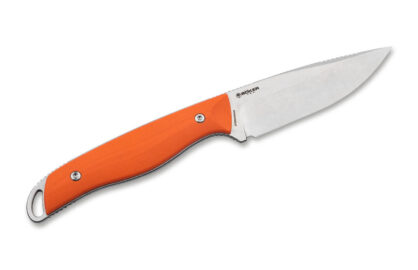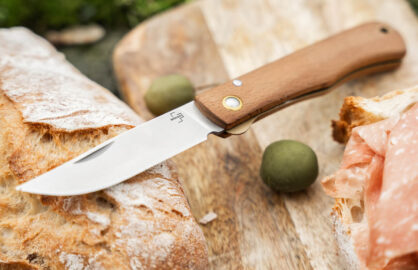Are We Entering the Era of Nitrogen-Based Blade Steels?

With the advent of particle metallurgy, nitrogen-based steels have become a growing presence in the knife world. And according to Elliot Williamson, Founder of Ferrum Forge Knife Works, one nitrogen-based steel in particular, CTS-BD1N, has the potential to become as ubiquitous as VG-10 or S35VN.
Williamson, who has worked with nitrogen-based steels for years, says the category brings significant advantages over more traditional chemical compositions. Nitrogen molecules being one third the size of chromium results in a more refined grain structure, resulting in a blade that takes a finer edge and that is less susceptible to chipping.
The presence of nitrogen also allows for less chromium to be used in general while still maintaining or even improving a steel’s stain resistance. In a DIN 50021 salt spray test, where samples are sprayed with a saltwater solution and left to sit for a set time to gauge their corrosion resistance, Böhler-Uddholm’s N360 nitrogen steel proved more rust resistant than 440C, even though 440C contains more chromium than N360. “Chromium is a necessary evil in martensitic stainless steel, but nitrogen stainless steels do seem to mitigate some of its drawbacks” Williamson concludes.
Williamson tells us among the current crop of nitrogen steels N360 and ETK’s Z-Finit are comparable to S7 tool steel, albeit with extremely heightened stain resistance, and edge retention on par with 154-CM. But he tells us Carpenter’s CTS-BD1N holds the potential to achieve stardom as the go-to performer of the production knife world. It costs about the same as VG-10 or N690, with a better mix of wear resistance, corrosion resistance, and sharpenability. These qualities make it an easy choice for anyone looking for the best price-to-performance ratio. “I think this could be the steel that changes things in the industry,” Williamson says.
Williamson does highlight one practical drawback which could get in the way of the widespread adoption of the blade material. “My major concern about BD1N is whether or not Carpenter will be able to keep enough of it supplied,” he tells us. Cold Steel recently announced they had to ditch Carpenter’s CTS-XHP as their standard blade material because the company couldn’t maintain a reliable stream.
Despite the risk, Sal Glesser has already revealed that Spyderco’s Chinese OEM will likely start phasing in CTS-BD1N to replace the BD1 on models like the Polestar and Raven 2. If others follow, BD1N could represent a new watermark for budget-friendly steel performance. “It’s really going to come down to how many companies pick it up and promote it, how many are willing to put real marketing dollars behind it.”





















0 comments